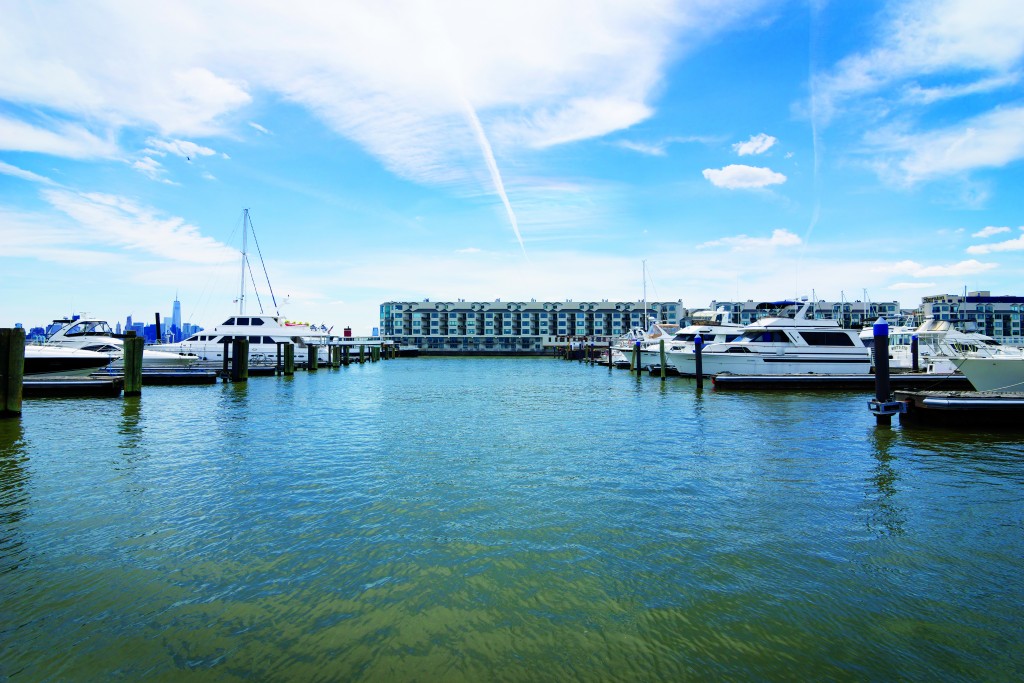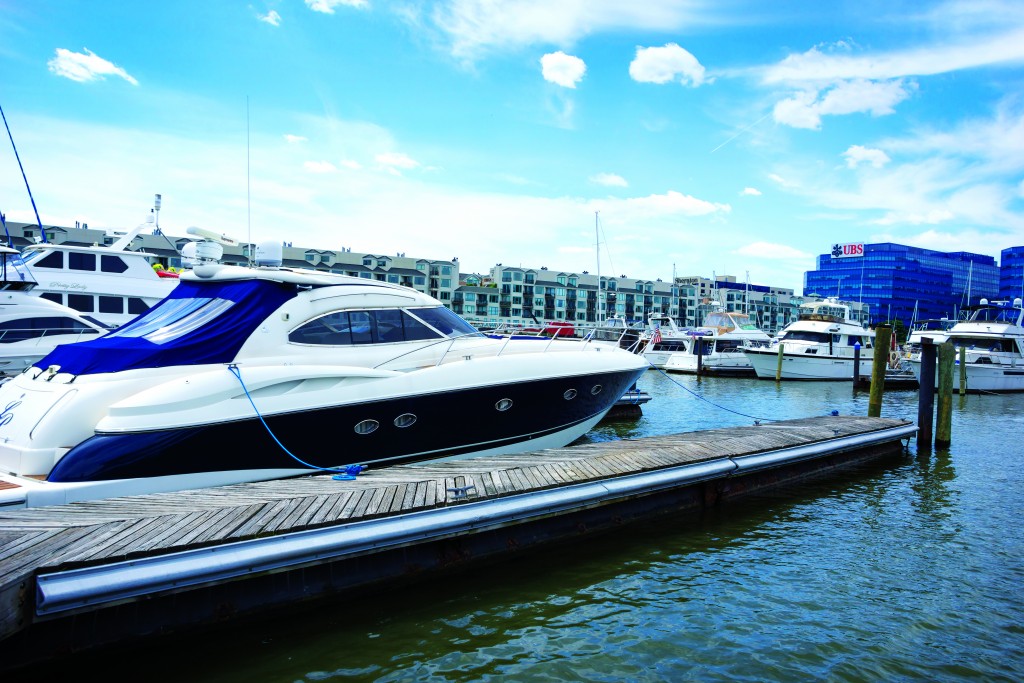Steve M. Israel was practicing law when he began syndicating properties. That is when an individual or company purchases a property by gathering the necessary capital from investors, who then own a percentage of the property, but leave management responsibilities with the syndicator. Or put more simply by Israel, “Syndication is when you have no money, but use other people’s money.” When he syndicated One Time Square in 1985, he stopped practicing law and plunged into a career in real estate.
We met at Lincoln Harbor Yacht Club in Weehawken, which he has owned since 1998. Adjacent to midtown Manhattan, the marina has an inherent novelty absent in other marinas not situated across from an urban mecca. There is a kind of awe involved when you float down this historic body of water, looking up at the product of hundreds of years of human ingenuity and industry. Israel certainly sees the difference. “It’s much more fun to boat here,” he said. “People freak out, especially if they’re out of town, to see Manhattan.” For Israel, who has been purchasing and investing in real estate for 30 years, marinas are a big part of his business.
In addition to Lincoln Harbor, he owns Sag Harbor Cove Yacht Club in Long Island which he purchased with a partner, and Port Tarpon Marina outside of Tampa, Florida. He also owns Marina Mile Yachting Center, a shipyard outside of Fort Lauderdale, where boats are repaired. Port Tarpon was syndicated during his time as owner of One Time Square, beginning his ownership of marinas. Considering his choice of real estate, I initially expected an avid boater, but in reality it was a good decision. “I could write it off in a short period of time, from a tax point of view,” explained Israel. “And I didn’t think it would be easy to reproduce, because environmental and other regulatory issues make it hard to build a marina. So long term, you get appreciation…And it would be fun, I’d rather hang out at a marina than hang out at a warehouse. So that’s why I did the first one.”
After purchasing Port Tarpan, Israel would buy people out as the market fluctuated. “When the market goes down, people want to leave so as I got a little bit of money I would buy them out,” he told me. After buying one marina, people came to him to buy more. That’s the advantage of purchasing a niche property like a marina. “Deal flow,” said Israel. “Once you become known as someone who can buy marinas they come to you first. I like other real estate also, and maybe 50 percent of my portfolio is other things but there are a million guys that will buy an apartment building, along with me. There’s not a million guys that will buy a marina.”
Israel purchased Lincoln Harbor from Stephen Sloan, who originally marketed the marina toward avid fishermen. Sloan, himself a champion angler and marine conservationist, knew that the Weehawken marina is actually closer to a great deep sea fishing hole than Montauk. A dockominium style marina, each slip is a separate deed that can be purchased. This became popular in the mid to late 1980’s when the demand for dock slips exceeded the supply, causing rental rates to increase significantly. This gave boaters an opportunity to invest in their property long term, ultimately saving money by avoiding fluctuating rents and having the option to sell the ship for a profit. This is ideal for the perpetual boater and fisherman for whom a boat slip is as important as a driveway, but ultimately markets fluctuate and trends falter, especially in markets where there is a less active boating community. When ownership changed hands to Israel, he purchased 246 of the 250 slips so that he could rent them and have more control over the property.
“With marinas, they’re very, very unique. People always try to look for generalization but you have to analyze the demographics of each individual marina, compare them,” explained Israel. For example, the Sag Harbor Cove Marina caters to a more affluent community, while Port Tarpon in Tampa is predominantly middle class. Lincoln Harbor is at an interesting crossroads regarding demographics. Despite being a great location for fisherman, Israel determined that Lincoln Harbor was better marketed to those seeking leisure and ambiance. Once he purchased the marina, he began marketing it for dinner cruises. Six are currently operating out of Lincoln Harbor Yacht Club. “I realized right away that’s a spectacular use for this place because every tourist wants to see the empire state building and the statue of liberty,” said Israel.
However, just as cities and real estate trends change, Israel is seeing new potential in Lincoln Harbor. “I see this place certainly now…as a great place to live because you’re just in this high demographic area where every young person wants to live in this area,” he explained. With so many college graduates and young professionals opting to live on the Jersey side of the Hudson, demand for housing makes rents and home values high. Walking around Lincoln Harbor, I already saw two houseboats so it’s conceivable to see many more, considering that it is a centralized waterfront location that is significantly cheaper to own than an apartment. “I think that’s the highest and best use because we have a ferry every fifteen minutes to Manhattan, we’ve got great facilities, great views, as you can see, and you can actually buy your lot,” he told me. Though admittedly smaller, with a growing movement toward tiny homes among environmentally and budget conscious young Americans, houseboats have a similar draw.
While Israel’s ownership of marinas may allow him to corner a market, they are not easy to maintain or run. Maintenance costs at a marina can be staggering, especially under specific circumstances. After 9/11, the PATH shut down for two years, increasing ferry traffic in the New York Harbor and as a result, amplifying the wake thrown off by boats which beat the shore and the marinas that line them. These extensive wakes damage the docks and the boats that they house. In 2005 Israel reported racking up over $2 million dollars in damage according to a New York Daily News article—this despite the reopening of the PATH in 2003 and installing a wake screen to dampen the wake. It continues to be an issue, and will have to be dealt with if he wants people live in the marina, and not be tossed from their beds. “We’re going to build a brand new [sea]wall here to make this like a pond. It’s going to take a lot of money,” he told me, “but I think it’s worth it.”
MORE Lifestyle STORIES
Get an inside vue on the latest in luxury. You heard it here first.





